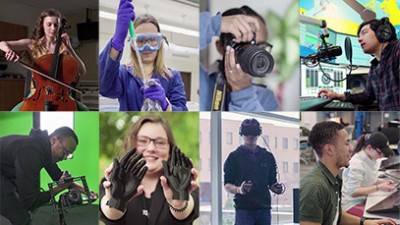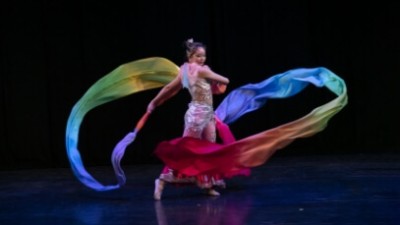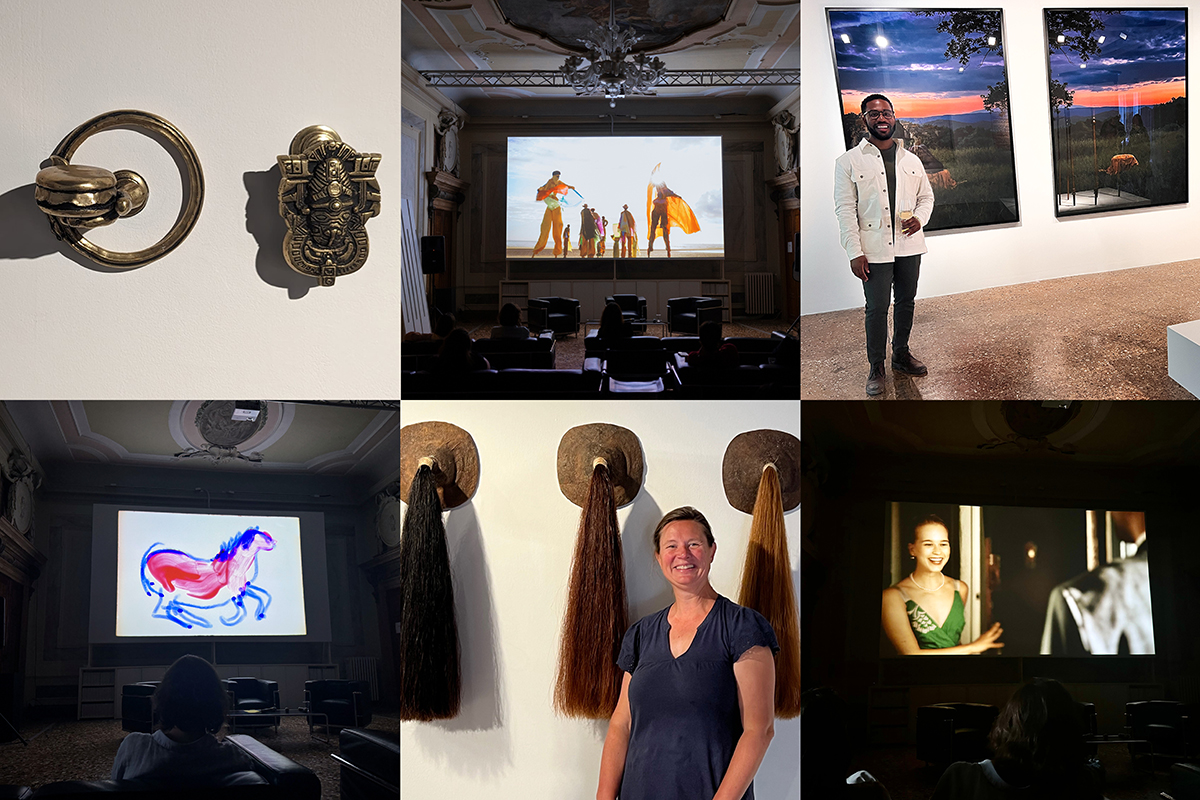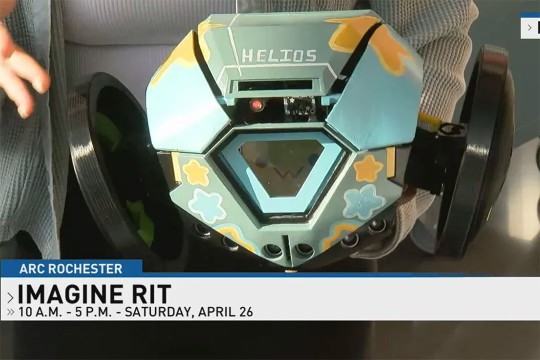Venice Art Biennial showcases RIT's extensive creative community
Middle top photo by ECC/Federico Vespignani
RIT faculty featured works in the Venice Art Biennial are: "PastFastForward" by Juan Noguera (top left), "Moko Jumbie" by Vashti Anderson (top center), "Love Without Justice" by Joshua Rashaad McFadden (top right), "Pink Pottery" by Christine Banna (bottom left), "Chasing Tail" by Elizabeth Kronfield (bottom center), and "Terrible Children" by Shanti Thakur (bottom right).
An international exhibition featuring six faculty in RIT’s College of Art and Design marks a unification of makers in sculpture, film, photography, and industrial design while showcasing the college’s breadth of creative disciplines.
The collection of RIT works is titled Cultural Disruptors, part of the “Personal Structures” exhibition, which opened April 20 and is on view through Nov. 24 in the European Cultural Centre in Venice, Italy. It is a featured exhibition of the Venice Art Biennial.
The faculty, and their works, in the show are:
- Vashti Anderson, assistant professor, School of Film and Animation — “Moko Jumbie”
- Christine Banna, assistant professor, School of Film and Animation — “Pink Pottery” (experimental animation)
- Elizabeth Kronfield, director, Schools of Art and American Crafts — “Chasing Tail” (sculpture)
- Joshua Rashaad McFadden, assistant professor, School of Photographic Arts and Sciences — “Love Without Justice” (photography)
- Juan Noguera, assistant professor, School of Design, and Paolo Cardini, professor, Rhode Island School of Design — “PastFastForward” (design, AI)
- Shanti Thakur, director, School of Film and Animation — “Terrible Children” (film)
ECC/Federico Vespignani
From left, School of Film and Animation faculty Christine Banna, Shanti Thakur, and Vashti Anderson were at the European Cultural Centre in Venice, Italy, in late September for a screening of their films and a Q-and-A event.
Collectively, the faculty investigated transgressing formal and social norms of race, gender, post-colonialism and class.
Kronfield’s sculptures "Chasing Tail" and Banna’s animated film "Pink Pottery" explore gender identity as forced onto materials and forms, affecting relationships in both the natural and industrial world. Noguera’s industrial design experiment "PastFastForward" disrupts A.I. tools of the global north by pairing them with traditional sand-casting techniques of Antigua, Guatemala, discovering unique relationships to capitalistic colonization.
Cultural Disruptors also invites viewers to enter the makers’ meditative and poetic worlds through film and photography. Thakur’s hybrid film "Terrible Children" crosses narrative and documentary modes to investigate family banishment, colonial war, and interracial love. McFadden’s "Love without Justice" delves into an autobiographical archive where intimate connections, the Black church, and vulnerability in family interconnect. Anderson uses magical realism in her film "Moko Jumbie," where taboo attraction lives amongst spirits in the natural world.
The project is evidence of how a community of diverse creatives can, at the same time, create personal narratives and reverberate on a global scale. Each singular voice echoes the past with an eye toward the future.













